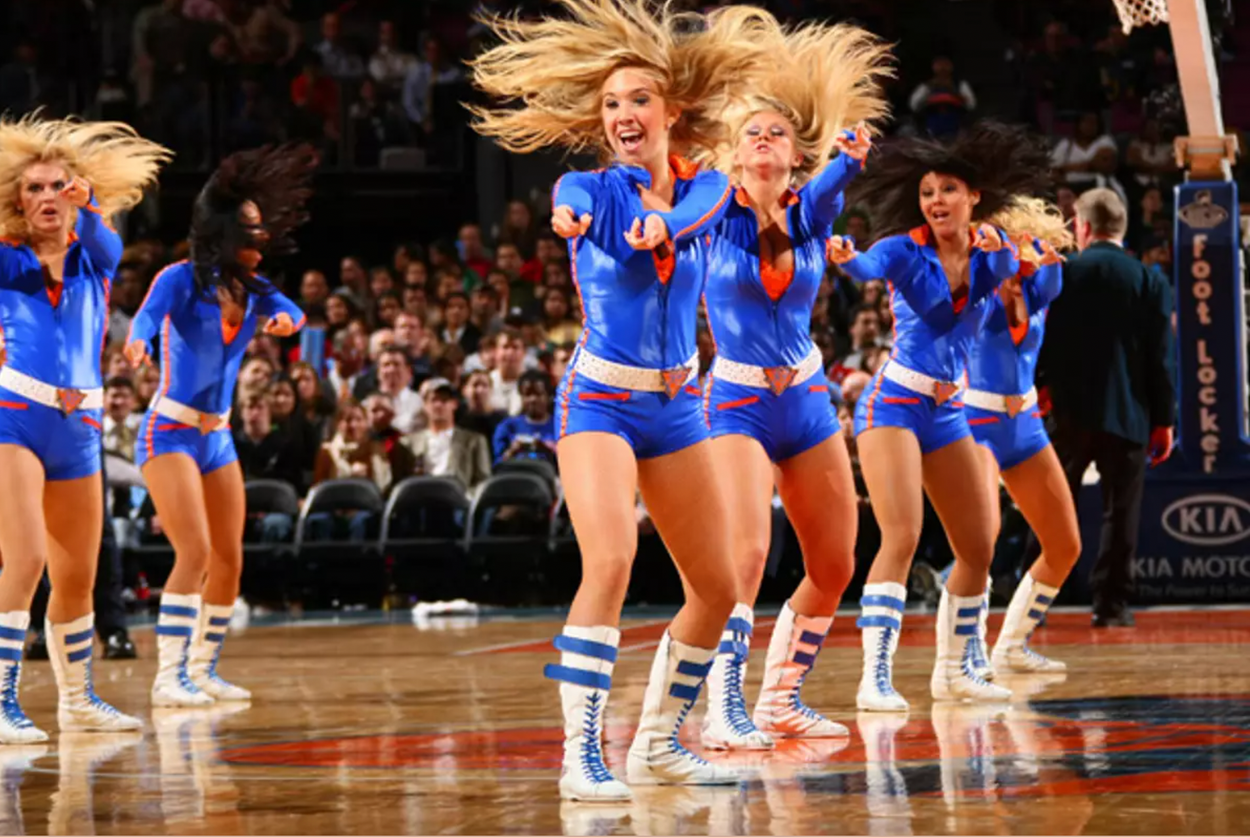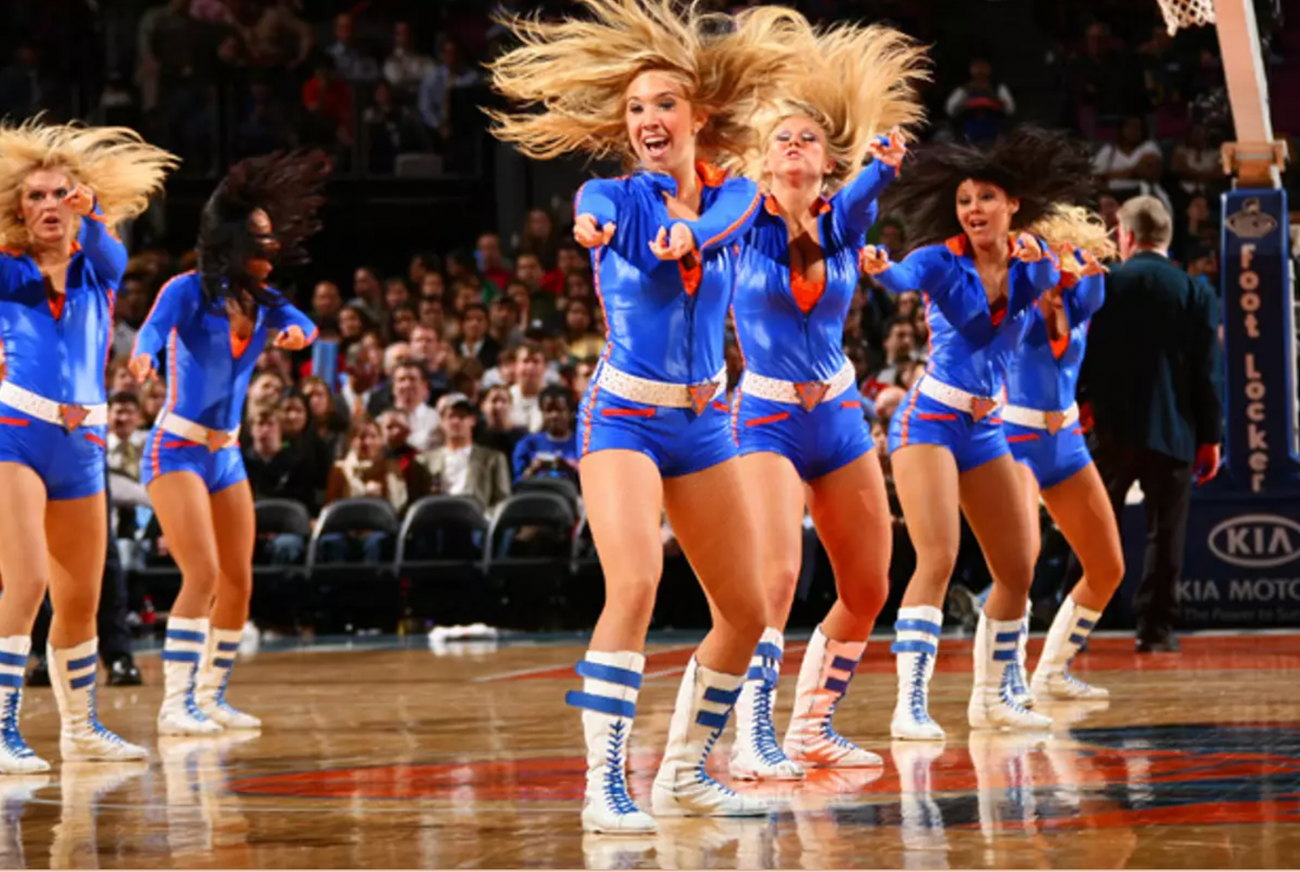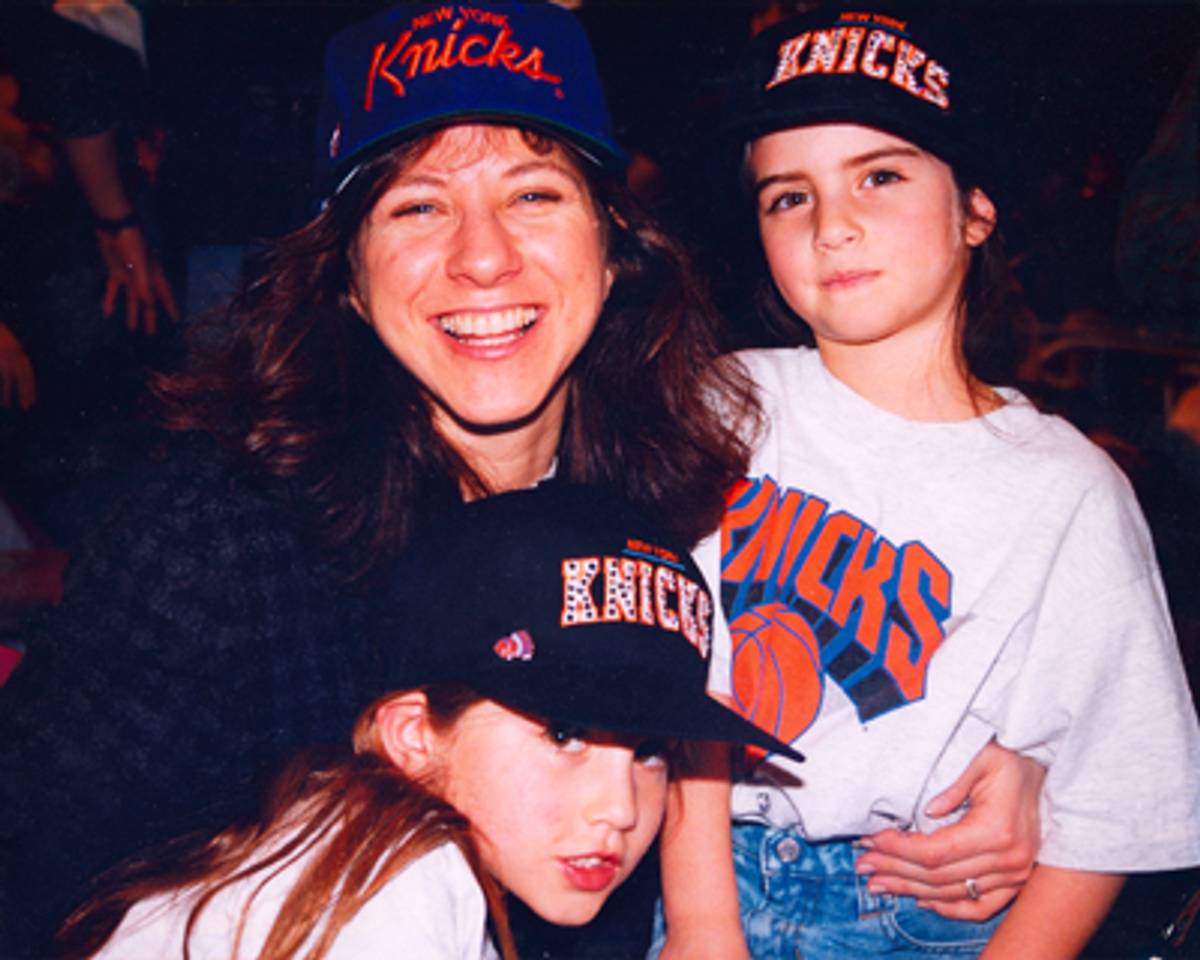Game Changer
Twenty years before Linsanity, the Knicks City Dancers took Madison Square Garden by storm. I should know—my aunt invented them.




Your instinct at the end of the first quarter of a Knicks game might be to stand up and stretch your legs. But be warned: There’s a good chance you’ll be chided, with various degrees of politeness, to sit back down, because you’re blocking the view of 20 lithe, leggy Knicks City Dancers shaking what their mamas gave them. On some nights, particularly before Carmelo Anthony and then Jeremy Lin came to town, they could be the most entertaining thing on the court.
Last Friday night, after the buzzer signaled the end of the first quarter against the New Orleans Hornets, the dancers stormed the court. The Knicks were down 27-13, an unpromising start to what would be their first loss since Linsanity took hold earlier this month, and Madison Square Garden was packed with fans who had come to see the Harvard-educated point guard. But for just a few minutes, all eyes were focused on the dancers as they performed a routine from their early days, part of their 20th anniversary celebration.

“My Aunt Pam created the Knicks City Dancers,” I explained loudly, and unnecessarily, since all of my friends already know this. My standard game outfit resembles that of a headstrong, overgrown child: I sport a bedazzled Knicks hat adorned with playoff pins from 1993,‘94, and ‘96, sized to the largest notch, and an early ‘90s Larry Johnson Hornets jersey, which formerly hung to my knees but these days is best described as slim-fitting, from before Johnson was traded to the Knicks in 1996 and the Hornets relocated from Charlotte, N.C., to New Orleans. It’s a nod to my childhood fandom and the ‘90s Knicks, who, though I was only in single digits at the time, figure heavily into my early memories. That’s because my mom’s younger sister, Pamela Harris, joined the Knicks in 1991 as director of marketing. In addition to overseeing the development of the classic “Go NY Go” theme song—which asked fans the ever-important question, “Are you down with the orange and the blue?”—she spearheaded the creation of the Knicks City Dancers. In the process, my aunt facilitated one glorious, loosely interpreted “take your daughter to work day” during which I got to use the announcer’s microphone and even dribble on the court.
With a degree from Stanford and an M.B.A. from Wharton under her belt, Harris dreamed of working in basketball, where the stakes were high and the fans passionate about the product. She knew she could use her marketing background to improve the fan experience. “I wanted to work on something that consumers loved even more than you did, and the thing that speaks to that better than anything is sports,” she explained. She interviewed with Dave Checketts when he become president of the Knicks in early 1991 and got hired as director of marketing when she was 29. (When Harris was named to Crain’s 40 Under 40 list in 1999, Checketts recalled her unique résumé, which listed her ability to “do a Tomahawk dunk on a 6-foot basket.”)
Harris joined the team for the 1991-1992 season, just as famed former Los Angeles Lakers coach Pat Riley began as the Knicks’ new coach. The Knicks and the Garden were in the midst of a transformation, and so was Harris: She was now the fifth member of an all-male executive team.
***
Given the ubiquity of the Knicks City Dancers (they appeared in a Sex and the City episode in 2003, solidifying their pop-culture immortality) and family-friendly spinoffs the Knicks City Kids, Knicks Acroback tumblers, and even the Knicks City Sticks at Knicks home games, it’s hard to imagine a time when bright, loud, and energetic entertainment didn’t fill the court at the Garden during time-outs and between quarters. But while Madison Square Garden is touted as the world’s most famous arena, it was more recent technological advancements that helped transform the fan experience.
“While I couldn’t do anything about the product itself on the floor,” Harris explained, “what I could control is the environment.” In 1991 the facilities were renovated; large screens and an enhanced music system were installed. Hip hop took over as the music of choice as players warmed up. Every change was scrutinized by the fans and the press. “When you work for a sports team and there are six full-time beat writers that are paid just to follow the team, everything you do is examined,” she said. Harris learned this the hard way, when a short-lived promotion that got the crowd free pizza from a sponsor if the Knicks could keep the opposing team down to a certain number of points led to crazed chants of “Pizza, pizza” and raised the stakes for the players beyond just a win or loss.
But the biggest change was the creation of the Knicks City Dancers. At the time, only a handful of NBA teams had cheerleaders, and the Laker Girls were the most high-profile. Harris realized that dancers could be a great way to raise team spirit and reach out to the fan base in ways the players’ schedules simply didn’t permit. She also saw an opportunity for sponsorship revenue. Harris began thinking of ways to put an authentic New York stamp on team dancers. She hired Petra Pope, who had worked with the Laker Girls (and who is currently a senior vice president for event marketing for the New Jersey Nets), who put together a diverse, talented group of dancers who would represent the Knicks at home games.
But unlike the Laker Girls, they weren’t going to be tawdry. A New York Times article about the first Knicks City Dancers auditions, published Sept. 22, 1991, starts with this:
“No skin,” Pam Harris, the director of marketing for the New York Knicks promised solemnly, as 200 beautiful young women in leotards, tight halter tops and bicycle shorts practiced pelvic thrusts on the basketball court behind her. “We won’t have them do anything demeaning.”
While the bright orange Donna Karan motorcycle jackets with sequined Knicks logos that Harris commissioned in the early 1990s as costumes eventually gave way to the spandex superhero-inspired outfits worn today, Harris isn’t surprised about the dancers’ continued success: “People really came to look forward to them, and it became an integral part of a Knicks game. I like the way that they’ve grown and evolved over time.” In the early seasons the dancers were heavily styled, with elaborate—and expensive—designer outfits, but only so much of that fashion-forward effort was visible to fans. “There was a fine line,” Harris recalls, of not wanting them too be dressed revealingly, but understanding that they were dancers and the most important thing was for them to be able to move freely. “I knew the women, they were smart and funny and cool,” she explained. “We were giving dancers another outlet to perform, and where are you going to find better dancers than New York City?”
Though Harris left the Garden in 2000, having served as vice president of marketing for the Knicks then senior vice president of marketing for all of Madison Square Garden, she remains a loyal Knicks fan—barring the occasional network blackout. An active member of Women in Sports and Events, where she has been a mentor for the WISE Within program, Harris still has a sharp eye for marketing. As a fan, Harris thinks Jeremy Lin’s success has been exciting for New York, providing the jump-start the team has sorely needed for some time. “That’s the really fun thing about sports, you don’t know what’s going to happen day to day.”
Stephanie Butnick is deputy editor of Tablet Magazine and a host of the Unorthodox podcast.
Stephanie Butnick is chief strategy officer of Tablet Magazine, co-founder of Tablet Studios, and a host of the Unorthodox podcast.